New rotary parlour improves milking efficiency
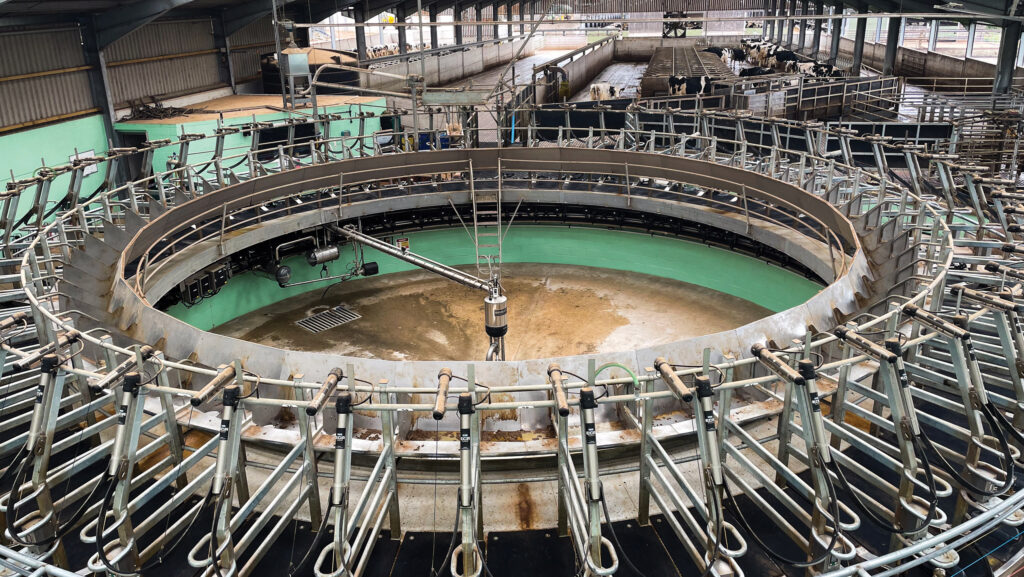 © Rhian Price
© Rhian Price Investing in a new rotary parlour has almost halved milking times and improved milk quality at a Staffordshire dairy.
Third-generation farmer Dave Eardley, who milks 520 cows at Upper House Farm near Market Drayton, replaced his 12-a-side herringbone parlour with a 54-point Waikato Centrus Rotary two years ago.
See also: Why a staffroom is vital for a productive livestock team
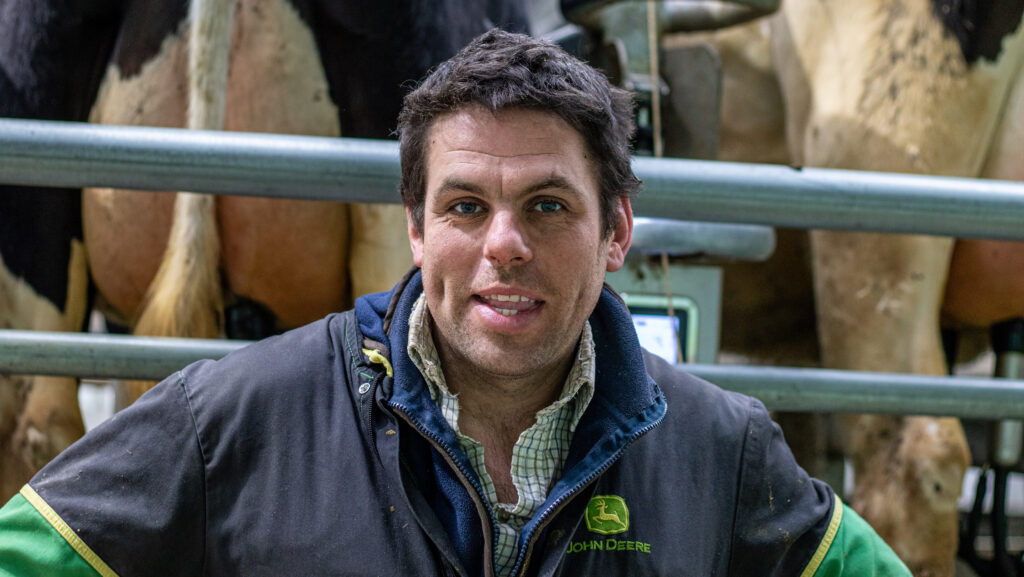
David Eardley © Rhian Price
The parlour has a composite deck, rather than concrete or steel, and is only the fifth of its kind to be installed in the UK.
The building that houses the parlour incorporates a staff room complete with a kitchen, toilet and shower; a room for a 25,000-litre Roka bulk tank; a collecting yard; an automatic drafting gate with cow handling facilities; a straw yard for sick cows and 50 cubicles for fresh cows.
Farm facts
Upper House Farm, Market Drayton
- Farming 162 ha (101 ha owned, the rest rented)
- Milking 520 Holsteins (35% heifers)
- Cows housed year round
- Calving all year round
- Breeds own replacements
- 54-point rotary parlour
- Yielding 11,000 litres at 4% butterfat and 3.3% protein
- Selling milk to Muller/Tesco (60% sold to Tesco)
- Employs one person full time and five part time
A key consideration when looking at new parlours was staff and cow comfort, says Dave, who visited several farms with rapid-exit and rotary parlours before making his decision.
“The old parlour had been in for 22 years and it was horrible. It was taking two of us 10 hours of the day to milk.
“The rotary is a fantastic way of milking cows because it is comfortable for the milker and the cows are quiet,” explains Dave, who farms in partnership with his father, John, and mother, Ruth.
The principal reason he opted for a rotary is because he found the cows walked onto the platform much more easily owing to the individual stalls, and they did not need collecting.
The building was supplied by Browns of Wem and built by Morris and Steve Young.
The parlour was installed by Waikato dealer MR Deane and the concreting was carried out by Brocklehurst contractors.
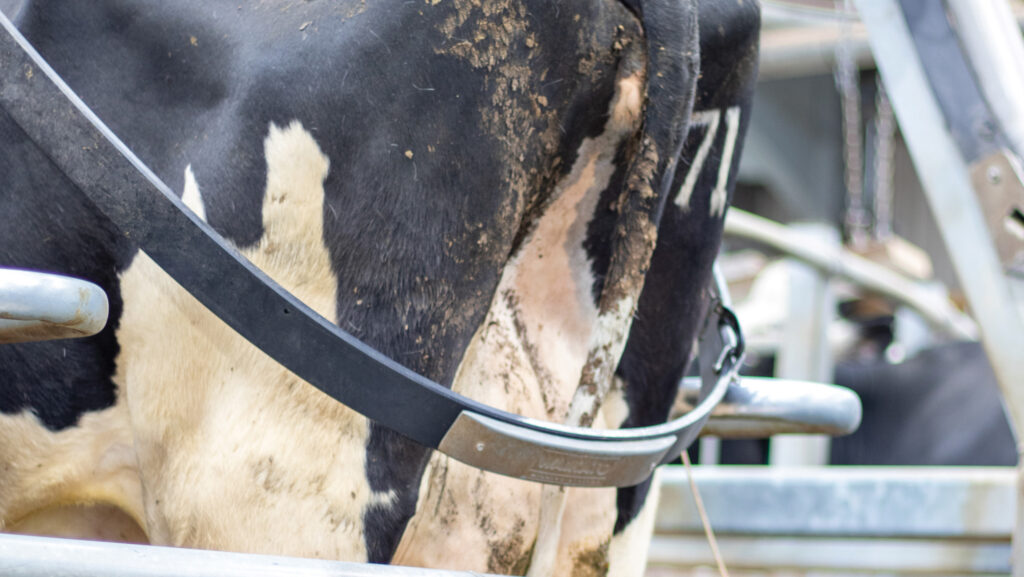
© Rhian Price
Key features
The deck is made from multiple layers of fibreglass composite, making it 85% lighter than one made solely of concrete.
This feature added to the cost – making it £40,000 more expensive – but Dave says it should reduce wear and tear on working parts.
And, unlike concrete, it does not get corroded by dairy chemicals, he adds.
On entry to the parlour, there is a Hi-Flow backing gate. Each bail has a rubber floor mat, which has made milking quieter, and Dave says he has also seen an improvement in foot health.
Automatic deck-mounted teat sprayers and automatic cluster removal (ACR) are also fitted.
Once cows have entered the bail, a restraint is automatically lowered to prevent them backing off the platform until they have been milked.
It is then raised again, in conjunction with the ACR, so cows can exit.
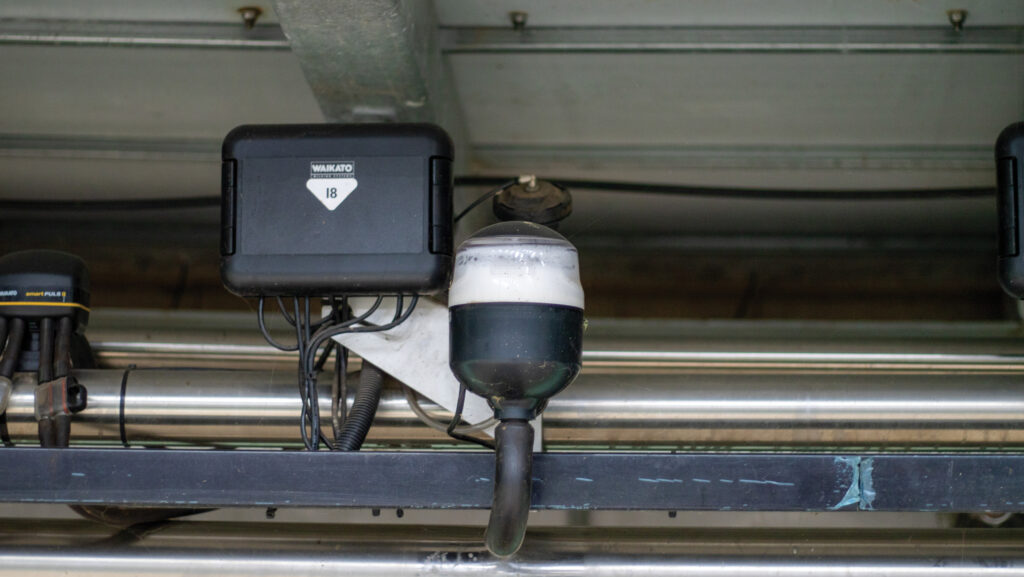
© Rhian Price
Dave says one of the best features is that the electronic milk meters are on the inside of the parlour. This allows plenty of room away from milking activities during milk recording.
Furthermore, automatic identification (ID) entry allows for easy recognition of cows during milking.
“The milk recorders link their laptop to the parlour router using Team Viewer and it tells them which cow is in each stall,” he explains.
This technology also enables cows to be drafted at the segregation gate – which is located at the parlour exit – to the fresh cow group, a foot-trimming crush, or one of three stalls for artificial insemination.
In addition, auto ID means cows can be fed to yield. Currently, during milking, cows are fed 1kg a head a day (0.5kg/milking) through in-parlour feeders.
The remaining concentrate is fed in the total mixed ration (TMR) up to 11kg a head a day.
There is one milk pulsator for every two stalls, rather than one for every stall, which means there are half as many to service.
“It is more efficient as well. Usually, vacuum on and off is within the meter, but [here] it is separate to the meter, so if the meter isn’t working, the vacuum carries on working,” adds Dave.
The dedicated area for fresh cows has 50 sand-bedded cubicles and a wide feed passage.
Animals stay in this group for 30 days after calving so a close eye can be kept on them.
The parlour exit runs parallel to the opposite side of the fresh-cow area, and Dave has fitted self-locking yokes along the feed fence shared with fresh cows.
This doubles up as a handling area during weekly vet visits by Nantwich Farm Vets.
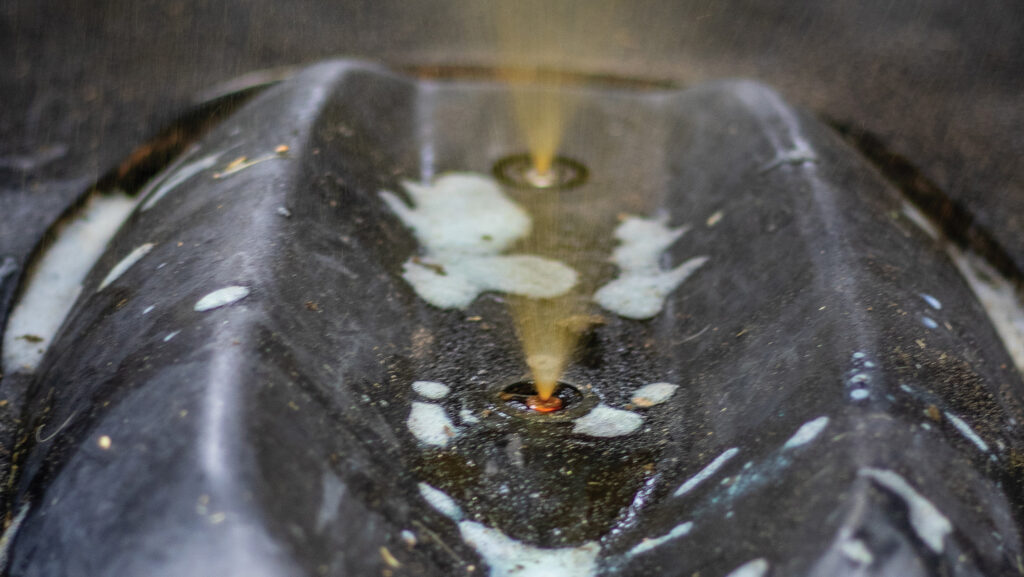
© Rhian Price
Benefits
Since installing the new parlour, milking times have been cut from 10 hours to six hours daily (three hours in the morning and three in the afternoon).
At the same time, cow numbers have increased from 300 to 520.
Two people are still required to milk the cows – one pre-wiping and one milking – but automatic teat spraying on each stall has reduced labour requirements.
The parlour can be controlled using Waikato’s Navigate Dairy Management System, which also provides insights into individual cows.
Currently, one rotation of the parlour takes 10-11 minutes, but this can be slowed down or stopped, to deal with fresh cows, for example.
Udder health has improved – somatic cell counts have fallen from 140,000 cells/ml to 110,00 cells/ml.
Milk quality has also benefited from a reduction in Bactoscan.
“We were always running at about 25 through the old parlour, but it has dropped drastically, to 10 or under,” says Dave.
This has coincided with switching from using paper towels for cleaning cows’ teats to foam dipping and wiping, but Dave reckons the new parlour wash will have had the biggest impact on the Bactoscan reduction because of improved efficiencies.
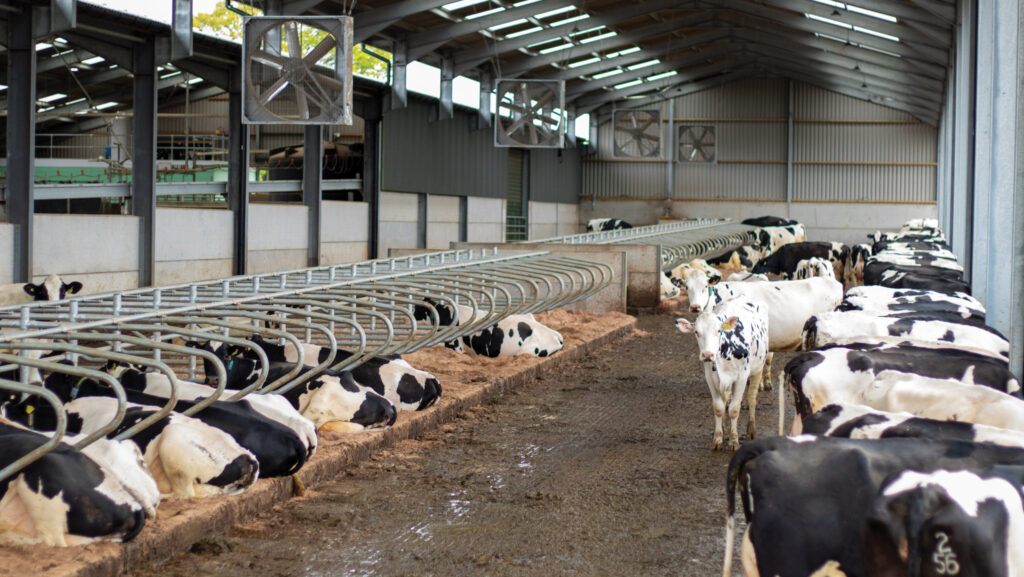
© Rhian Price
In a further improvement, a heifer shed has been built to the side of the new dairy.
It comprises two rows of 60 sand-bedded cubicles and includes six belt drive fans, fitted via chains to the roof, and LED lights.
The combination of faster milking and separate heifer grouping has seen first-lactation milk yields climb by 5kg/day to 30-35kg, says Dave.
Early and mid-lactation milk yields of cows have also increased by 2-3kg a head a day to 39-41kg.
Furthermore, first-lactation conception rates have been running 5% higher (49% on average) for the past 18 months, compared with the previous 36 months.
For more on parlours, go to fwi.co.uk/know-how/dairy-housing
